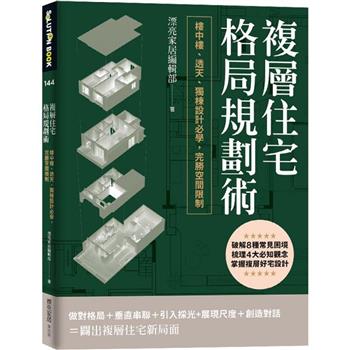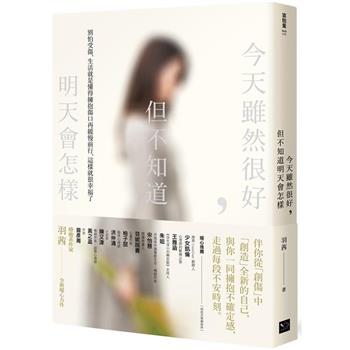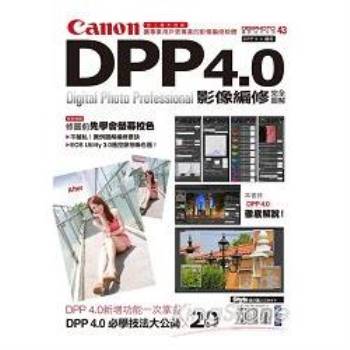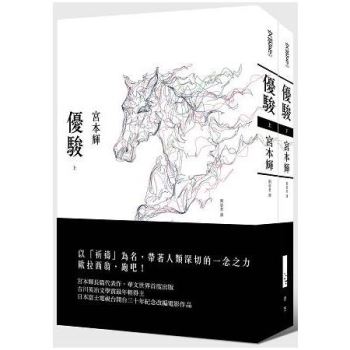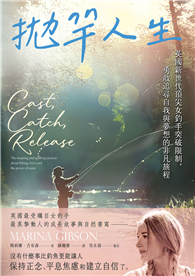88式太極拳套路拳譜
88式太極拳套路動作詳解
第一組
第二組
第三組
第四組
第五組
第六組
88-form Taiji Quan Spectrum
88-Form Taiji Quan Detail Explanation Step By Step
Group 1
Group 2
Group 3
Group 4
Group 5
Group 6
| FindBook |
有 6 項符合
八十八式太極拳學與練(附VCD)的圖書 |
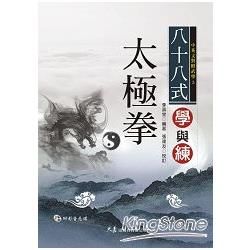 |
八十八式太極拳學與練(附VCD)【金石堂、博客來熱銷】 出版日期:2014-11-01 |
| 圖書選購 |
| 型式 | 價格 | 供應商 | 所屬目錄 | $ 237 |
Life & Style |
$ 237 |
運動休閒 |
$ 270 |
運動/戶外活動 |
$ 270 |
太極 |
$ 270 |
休閒生活 |
$ 333 |
社會人文 |
|---|
| 圖書館借閱 |
| 國家圖書館 | 全國圖書書目資訊網 | 國立公共資訊圖書館 | 電子書服務平台 | MetaCat 跨館整合查詢 |
| 臺北市立圖書館 | 新北市立圖書館 | 基隆市公共圖書館 | 桃園市立圖書館 | 新竹縣公共圖書館 |
| 苗栗縣立圖書館 | 臺中市立圖書館 | 彰化縣公共圖書館 | 南投縣文化局 | 雲林縣公共圖書館 |
| 嘉義縣圖書館 | 臺南市立圖書館 | 高雄市立圖書館 | 屏東縣公共圖書館 | 宜蘭縣公共圖書館 |
| 花蓮縣文化局 | 臺東縣文化處 |
|
|
圖書介紹 - 資料來源:博客來 評分:
圖書名稱:八十八式太極拳學與練(附VCD)
序
前言
88式太極拳是中國國家體育運動委員會,繼1956年公佈「簡化太極拳」之後公佈的又一套現代太極拳運動項目。
1956年,在國家體委工作的中國著名武術家李天驥先生會同有關專家致力於楊式太極拳的推廣工作。他們簡化了傳統的85式楊式太極拳的動作難度,保留了楊式太極拳的基本要領和套路結構佈局,改編成88式太極拳,並於1958年面世。88式太極拳的面世,受到廣大武術愛好者的歡迎,作為一項群眾體育運動,它在很短的時間內就在全國開展起來,特別是在20世紀五六十年代這一困難時期,太極拳作為一項特殊的體育運動項目,更是受到廣大人民群眾的青睞。
88式太極拳有如下優點:
1. 88式太極拳以在民間流傳最廣的楊式傳統太極拳85式為基礎,既保留了楊式太極拳的基本要領和結構,又簡化了動作難度,易學易練,便於推廣。
2. 88式太極拳的基本動作特點是在楊式新架的基礎上進行了改編,與傳統的練法有所不同。它符合社會發展的需要,重點突出了健身和醫療價值,淡化了攻防內容,做到了與時俱進。
3. 在演練的時間和速度上符合科學的要求,練一套大約需要20分鐘,充分發揮了健身和醫療保健的作用,對提高全民健康水準和人民精神素質大有好處。
88式太極拳的推廣已走過了50年的歷程。目前演練太極拳各式競賽套路和傳統套路的人較多,而練88式太極拳套路的人相對較少,特別是在年輕的一代中練88式太極拳的人不是很多。本書詳盡地介紹了88式太極拳套路,望能在全民健身活動中發揮其重要作用。
註:楊式新架
原「南京國術館」副館長李景林在1929年提出要在山東國術館全面開設太極拳班,以推廣太極拳。他請楊式太極拳一代宗師楊澄甫三次修定,由時任山東國術館教務主任的李玉琳演示,並徵求楊澄甫及其弟子武匯川、陳微明、褚桂亭的意見而形成的太極拳架,稱為楊式太極拳新架,有別於1934年楊澄甫定型的楊式傳統架。李天驥先生是李玉琳之子,其父子為楊式新架之楷模。簡化太極拳與88式太極拳就是在楊式新架基礎上改編而成的。
Preface
The 88-form Taiji Quan is another modern sport issued by the Chinese Sports Committee after the simplified Taiji Quan was published in 1956.
In 1956, the famous Wushu expert Li Tianji, who was working in the Chinese Sports Committee at the time, and some other relevant experts committed themselves promoting the prevalence of the Yang style Taiji Quan. They simplified the traditional 85-form of the Yang style while retaining its basic principle and form structure. As a result, it was adapted into 88-form Taiji Quan, which was finally issued in 1958. This form of Tai Chi spread all over the country within a short period and became very popular among Taiji Quan enthusiasts. It was especially welcomed by the people in the late 1950’s and the early 1960’s, which was a tough time in Chinese history.
The merits of the 88-form Taiji Quan include:
1. The 88-form Taiji Quan was based on the widespread Yang style of the 85-form Taiji Quan, and retained its basic principle and structure while reducing the difficulty, so that it is easier to learn, easier to teach, and easier to practice. Simplified from the widespread Yang style of the 85-form Taiji Quan while retaining its basic principle and structure, the 88-form Taiji Quan is easier to learn and to practice.
2. The main features of 88-form Taiji Quan was adapted from the new Yang style Taiji Quan, different in some aspects from the traditional one, and its functions of health preservation and medical value were enhanced, adapting to the needs of the modern society. With the original parts of attacking and defending omitted, it’s now focusing on the health-improvement and the medical effect.
3. Approximately 20 minutes are needed to complete the form. The time and speed to practice 88-form Taiji Quan have been adjusted according to the scientific standards. It is very effective in improving both the physical and the mental health of the people who practice it.
88-form Taiji Quan has been practiced for about 50 years. Recently, however, relatively less people practice 88-form than those who perform and exercise other competition forms or traditional routines, especially among young people. This book explains the steps of the 88-form Taiji Quan in detail. We hope that everyone will benefit from this book immensely.
Note: The new Yang style
In 1929, Li Jinglin, the deputy director of Nanking Association of National Arts, appealed for setting up Taiji Quan classes in the Shandong Association of National Arts in order to promote the Taiji Quan sport. He invited Yang Chengpu, the modern father of Yang style Taiji Quan, to edit the Taiji Quan form three times, which was demonstrated by Li Yulin, the dean of Shandong Association of National Arts (at that time). The new Yang style was formed after asking for suggestions from Yang Chengpu and his apprentices, Wu Huichuan, Chen Weiming, Chu Guiting and so on. Mr. Li Tianji is Mr. Li Yulin’s son, and they both made laudable contributions to the new style. Both simplified Taiji Quan and the 88-form Taiji Quan were created based on the new Yang style.
88式太極拳是中國國家體育運動委員會,繼1956年公佈「簡化太極拳」之後公佈的又一套現代太極拳運動項目。
1956年,在國家體委工作的中國著名武術家李天驥先生會同有關專家致力於楊式太極拳的推廣工作。他們簡化了傳統的85式楊式太極拳的動作難度,保留了楊式太極拳的基本要領和套路結構佈局,改編成88式太極拳,並於1958年面世。88式太極拳的面世,受到廣大武術愛好者的歡迎,作為一項群眾體育運動,它在很短的時間內就在全國開展起來,特別是在20世紀五六十年代這一困難時期,太極拳作為一項特殊的體育運動項目,更是受到廣大人民群眾的青睞。
88式太極拳有如下優點:
1. 88式太極拳以在民間流傳最廣的楊式傳統太極拳85式為基礎,既保留了楊式太極拳的基本要領和結構,又簡化了動作難度,易學易練,便於推廣。
2. 88式太極拳的基本動作特點是在楊式新架的基礎上進行了改編,與傳統的練法有所不同。它符合社會發展的需要,重點突出了健身和醫療價值,淡化了攻防內容,做到了與時俱進。
3. 在演練的時間和速度上符合科學的要求,練一套大約需要20分鐘,充分發揮了健身和醫療保健的作用,對提高全民健康水準和人民精神素質大有好處。
88式太極拳的推廣已走過了50年的歷程。目前演練太極拳各式競賽套路和傳統套路的人較多,而練88式太極拳套路的人相對較少,特別是在年輕的一代中練88式太極拳的人不是很多。本書詳盡地介紹了88式太極拳套路,望能在全民健身活動中發揮其重要作用。
註:楊式新架
原「南京國術館」副館長李景林在1929年提出要在山東國術館全面開設太極拳班,以推廣太極拳。他請楊式太極拳一代宗師楊澄甫三次修定,由時任山東國術館教務主任的李玉琳演示,並徵求楊澄甫及其弟子武匯川、陳微明、褚桂亭的意見而形成的太極拳架,稱為楊式太極拳新架,有別於1934年楊澄甫定型的楊式傳統架。李天驥先生是李玉琳之子,其父子為楊式新架之楷模。簡化太極拳與88式太極拳就是在楊式新架基礎上改編而成的。
Preface
The 88-form Taiji Quan is another modern sport issued by the Chinese Sports Committee after the simplified Taiji Quan was published in 1956.
In 1956, the famous Wushu expert Li Tianji, who was working in the Chinese Sports Committee at the time, and some other relevant experts committed themselves promoting the prevalence of the Yang style Taiji Quan. They simplified the traditional 85-form of the Yang style while retaining its basic principle and form structure. As a result, it was adapted into 88-form Taiji Quan, which was finally issued in 1958. This form of Tai Chi spread all over the country within a short period and became very popular among Taiji Quan enthusiasts. It was especially welcomed by the people in the late 1950’s and the early 1960’s, which was a tough time in Chinese history.
The merits of the 88-form Taiji Quan include:
1. The 88-form Taiji Quan was based on the widespread Yang style of the 85-form Taiji Quan, and retained its basic principle and structure while reducing the difficulty, so that it is easier to learn, easier to teach, and easier to practice. Simplified from the widespread Yang style of the 85-form Taiji Quan while retaining its basic principle and structure, the 88-form Taiji Quan is easier to learn and to practice.
2. The main features of 88-form Taiji Quan was adapted from the new Yang style Taiji Quan, different in some aspects from the traditional one, and its functions of health preservation and medical value were enhanced, adapting to the needs of the modern society. With the original parts of attacking and defending omitted, it’s now focusing on the health-improvement and the medical effect.
3. Approximately 20 minutes are needed to complete the form. The time and speed to practice 88-form Taiji Quan have been adjusted according to the scientific standards. It is very effective in improving both the physical and the mental health of the people who practice it.
88-form Taiji Quan has been practiced for about 50 years. Recently, however, relatively less people practice 88-form than those who perform and exercise other competition forms or traditional routines, especially among young people. This book explains the steps of the 88-form Taiji Quan in detail. We hope that everyone will benefit from this book immensely.
Note: The new Yang style
In 1929, Li Jinglin, the deputy director of Nanking Association of National Arts, appealed for setting up Taiji Quan classes in the Shandong Association of National Arts in order to promote the Taiji Quan sport. He invited Yang Chengpu, the modern father of Yang style Taiji Quan, to edit the Taiji Quan form three times, which was demonstrated by Li Yulin, the dean of Shandong Association of National Arts (at that time). The new Yang style was formed after asking for suggestions from Yang Chengpu and his apprentices, Wu Huichuan, Chen Weiming, Chu Guiting and so on. Mr. Li Tianji is Mr. Li Yulin’s son, and they both made laudable contributions to the new style. Both simplified Taiji Quan and the 88-form Taiji Quan were created based on the new Yang style.
|
